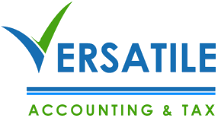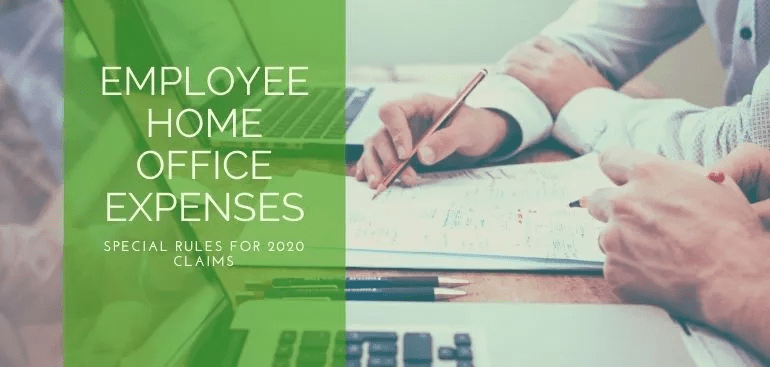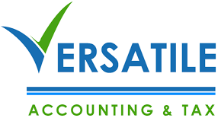Home office expense claims can be complicated. With such high volumes of new claims expected due to the increase in people working from home, CPA Canada offered the CRA ideas to help ease the process for employees, employers and the government alike.
We suggested the CRA could do this by:
- adopting a simplified set of rules to help employees claim home office expenses
- relieving the burden on employers by streamlining the process for providing T2200 Declaration of Conditions of Employment forms to their employees
The CRA has acted on both counts.
For 2020 only, the CRA allows employees to deduct their home office expenses using a temporary flat rate method if conditions are met. Employers do not have to produce T2200 forms for employees who choose to use the flat rate method. Alternatively, employees can choose to use the detailed method, which would allow them to deduct actual home office expenses paid. Under the detailed method, employers can provide a special short Form T2200S, Declaration of Conditions of Employment for Working at Home Due to COVID-19, as long as the pandemic caused the remote work arrangement.
The CRA also simplified the conditions for making claims under both methods.
In this blog, we highlight the key rules and considerations for making these claims. Topics include:
- overview of the tax rules for home office expenses
- new temporary home office expense claims process
- T2200 considerations for employers
We have also raised several questions and issues for the CRA to consider. We will provide updates on this page as the CRA responds.
Overview Of Tax Rules For Home Office Expenses
Under normal circumstances, employees who want to deduct their home office expenses must meet two main conditions.
First, an employee’s employment contract must be required to maintain a workspace in their home and pay for the related expenses. Employers attest to this requirement on T2200 forms issued to their employees, and employees are only eligible to claim a deduction if they have this form in hand.
Second, the use of the workspace must meet one of two conditions:
- the workspace is where the employee “principally” (more than 50 percent of the time) performs the duties of their office or employment
- the employee uses the workspace exclusively for earning employment income and for regularly and continuously meeting customers or clients while doing their work
These rules have not changed. The changes introduced by CRA are administrative concessions to these rules. Employees who worked at home before the pandemic should follow the detailed method for claiming a deduction for 2020.
New Temporary Claim Methods For Home Office Expense
For employees who worked at home during 2020 due to the pandemic, the CRA has temporarily simplified the process by:
- relaxing the employment contract requirement and providing a simplified definition of what working principally from home means in a pandemic
- allowing employees to claim a temporary flat-rate deduction for 2020 if conditions are met, instead of using the detailed calculation
- providing extensive online tools, forms and guidance to help employees claim the deduction
The eligibility criteria and calculations for the detailed and flat-rate methods are slightly different, as discussed in the following two sections.
Temporary flat rate method: Eligibility criteria and calculations
Under the temporary flat-rate method, employees qualify for a 2020 deduction if they meet all of the following conditions:
- worked from home in 2020 due to the pandemic
- worked from home more than 50 percent of the time for at least four consecutive weeks in that year
- claim home office expenses only and no other employment expenses
- were not fully reimbursed by their employer for all of their home office expenses
The temporary flat-rate method allows eligible employees to claim a deduction of $2 for each day they worked at home in 2020 due to COVID-19, up to $400. The amount is a substitute for actual home office expenses paid by the employee, such as rent, electricity, home internet access fees, office supplies (e.g., pens, paper) and unreimbursed cell phone costs.
Other points to keep in mind:
- an employee can qualify even if it was their own choice to work at home because of the pandemic
- employees who want to claim other employment expenses, such as employment-related auto expenses, must use the detailed method
- an employee that is reimbursed for only a portion of their expenses can use the flat rate method as long as they meet the other conditions
- the number of days worked at home due to the pandemic includes both full-time and part-time days but not days off (whether for vacation, illness or another reason)
Although the deduction is limited, the temporary flat rate method has some advantages:
- employees choosing the temporary method do not need to have their employers complete and sign a Form T2200 or T2200S, although they should do their best to document how many days they worked at home
- they do not need to determine and summarize eligible costs or keep receipts
Employees must use Form T777S, “Statement of Employment Expenses for Working at Home Due to COVID-19” to report that they are using the flat rate method and calculate their deduction.
Detailed method: Eligibility criteria and calculations
Under the detailed method, employees can claim the employment portion of actual home office expenses paid. Although the rules for 2020 are simplified, the calculations are essentially the same for employees who are required to work at home more generally.
Under the detailed method, employees qualify for the deduction if they meet all of the following conditions:
- worked from home in 2020 due to the pandemic or were required to work at home by their employer
- were required to pay for expenses related to their home workspace and used the expenses directly in their work
- either:
- worked in their home workspace “mainly” (more than 50 percent of the time) for at least four consecutive weeks, or
- only used their workspace to earn employment income, in particular, for regularly and continually meeting clients, customers or other people while doing their work
- have received a signed T2200 or T2200S form from their employer
The CRA has confirmed the employer’s requirement for an employee to work from home may be a written or verbal agreement. It does not have to be part of the employment contract. In addition, where an employee could choose whether to work from home due to COVID-19, the CRA still considers them to have worked from home due to the pandemic.
Qualifying employees using the detailed method must first determine the total of their eligible expenses overall. They must then prorate these expenses (excluding office supplies) based on the portion of their home used for employment, as we discuss in the next section.
Determining the percentage of workspace at home
To claim the employment portion of actual amounts paid, employees need to determine the portion of their home used for work based on both size and use (employment versus personal). For common areas, such as a kitchen table, the proration needs to account for both the floor space used for employment and its time.
If a specific space is used only for employment, employees will only need to prorate based on the amount of that space. The CRA provides plenty of examples and guidance for determining the percentage of the employee’s home used as a workspace, including situations such as common versus designated workspaces, more than one employee working in the same home, and changes of workspace during the year.
Eligible expenses
Eligible expenses include home office expenses as well as office supplies. Employees must separate the expenses between their employment use and non-employment (personal) use.
Eligible home office expenses include electricity, heat, water, utilities, home internet access fees (new for 2020), maintenance and minor repairs, and rent. (Commissioned employees can also claim some other expenses).
Non-eligible home office expenses include mortgage interest, principal mortgage payments, home internet connection fees, furniture (e.g., office chairs and desks) and capital expenses (e.g., replacing windows, flooring and furnace). To determine the deductible amount, eligible home office expenses are prorated by the percentage of the home used as a workspace (discussed above).
Where an employer requires the employee to pay for office supplies or certain phone expenses, the employee may be able to claim those expenses. The CRA’s website includes a comprehensive list of eligible and ineligible supplies. Eligible supplies do not need to be prorated like other home office expenses.
In general, to be eligible, the cost of supplies must relate to things that are consumed when doing work, such as paper or ink. The costs of more permanent items like calculators and computer cables are not deductible as office supplies, even though they are relatively inexpensive. The CRA is quite strict in applying these rules.
Calculating eligible home office expenses
Once the proration factor for costs other than supplies and total costs are determined, the employee can then determine the portion of each type of cost that is eligible for deduction. When doing the calculation, only expenses incurred during the work-from-home period(s) qualify.
For employees using the detailed method, the CRA provides guidance to determine eligibility, employment use of workspace and eligible expenses. The CRA also offers an online calculator that guides users through the process of computing the home office expense deduction under the detailed method, including prorated amounts.
One common question is how to calculate the amount of internet access fees that relate to employment. The CRA’s calculator prorates these costs like other costs such as electricity or heat (i.e. based on the home workspace percentage). In a December 2020 Question and Answer session, the CRA confirmed they would allow employees to use another reasonable method for this calculation but did not specify what other methods would be acceptable. Since internet use is hard to track and billing methods vary, it is unclear how an alternative approach would be documented.
Another thorny issue relates to condominium fees. The CRA has stated that employees can claim the portion of these fees associated with electricity, heat and water consumed in a condo unit owned by the employee using a reasonable basis. The CRA then describes an approach where an employee can use costs obtained from the condominium administrator.
Obtaining this information and calculating an amount may not be straightforward, so we have asked the CRA to ease the process by allowing employees to use a reasonable estimate for claiming condo fees.
Employees who use the detailed method need to maintain documentation to support their home office expense claim and have a signed copy of either Form T2200S or T2200 at the time they make their claim.
Employees claiming both home office and other employment expenses (such as automobile deductions) should use Form T777 Statement of Employment Expenses. Employees claiming home office expenses only should use the simplified Form T777S.
Which method produces the best result?
Like many things in tax, the best approach should be determined case by case, based in part on the answers to these questions.
- Do you rent your home? Under the detailed method, renters generally have higher eligible expenses than homeowners. Mortgage interest is generally not deductible, and costs such as insurance and property taxes are only eligible for commissioned employees. However, such expenses are indirectly reflected in rental payments, so renters’ total expense as a starting point is usually much higher.
- Do you own your home? Although $2 per day doesn’t sound like much, if your actual eligible costs are mainly limited to utilities and internet, then your actual prorated cost may be in this ballpark.
- What is a reasonable internet amount? As discussed, the CRA’s calculator prorates internet costs based on floor space usage in the same way as other costs. If an alternative but the reasonable approach is used, this could result in a somewhat higher deductible amount than the fixed-rate approach.
- Do you qualify under one method but not the other? Some employees may be eligible for one method but not the other. For example, an employee who also wants to claim automobile expenses must use the detailed method.
- Which method is simpler and costs less? If you qualify, the fixed-rate method is simpler to use, and no T2200 is needed. If you use a practitioner to prepare your tax return, the fees may be lower depending on how you are charged and the work involved to make a detailed claim.
Changing prior-year returns for unclaimed home office expenses
With all the talk of home office expenses, some employees may realize they could have been claiming these expenses in past years.
However, the temporary flat rate method and the simplified T2200S and T777S forms are only allowed for the 2020 tax year. For previous years, employers and employees must meet the general conditions and complete the T2200 and T777 forms that applied to those years.
Individuals can ask to change a return for tax years ending in any of the 10 previous calendar years (i.e., as far back as the 2010 tax year), applying the rules in place for home office claims in each of those taxation years.
T2200 Considerations For Employers
After the CRA introduced the simplified T2200S form, employers raised a number of concerns with us. Here are some of the most common issues we heard:
Which form?
As discussed, a T2200 or T2200S is only needed for employees who want to use the detailed method. If the employee worked from home only because of the pandemic, the T2200S can be provided to them. For employees who have additional expenses, such as working from home generally (i.e. before the pandemic hit), travel expenses or other costs, the regular T2200 is required. The CRA updated the T2200 on January 18, but unfortunately, it did not include the new home office wording from the T2200S on the T2200. On the revised T2200, the home office question is, “Did this employee’s contract of employment [under the contract itself or in a separate written or verbal agreement] require them to use a portion of their home for work?” We asked the CRA for guidance where an employee worked at home due to the pandemic only but also had other deductible employment expenses. In such a situation, we believe the best approach is to complete the T2200 for non-home office expenses only (i.e. don’t answer question 10 and the related information) and provide the employee with a T2200S in the same manner as other employees to cover off home office expenses. We are awaiting comments from the CRA on this issue, but we believe our suggested approach is reasonable.
Employers’ responsibilities
As discussed, employees who want to use the detailed method must have a T2200 or a T2200S. Employers will need to decide whether to go ahead and provide the form (generally, T2200S) to any employee who could be eligible to use the detailed approach or whether they will only provide the form to employees who ask for it.
Electronic signatures
The CRA requires an employer to have an authorized person sign the T2200S or T2200 and provide their contact details. The CRA will accept electronic signatures on these forms for 2020. Employers who plan to provide T2200S forms to all eligible employees may be able to partly automate the process by merging the names and answers to each eligible employee’s questions into a pre-signed template form.
Authorized person
According to the CRA, determining who is an authorized person to certify the T2200 and T2200S forms is up to the employer’s discretion. The CRA does not require the form to be signed by an authorized “officer.” The authorized person’s contact information is required to be included if the CRA wants to follow up, and employers should consider this when determining who should certify the form.
Employees who were already required to work from home
The new measures do not affect employees who worked from home before the pandemic and claimed the related expenses. Employers should follow their existing T2200 process for these employees.
If corporate tax filing or personal taxes got you confused, then the experienced Calgary CPAs at our accounting firms are here to help. We have two offices to serve you. The Calgary NW accounting office serves the northwest and southwest clients. The NE accounting office serves the northeast and southeast clients. Contact us today!




